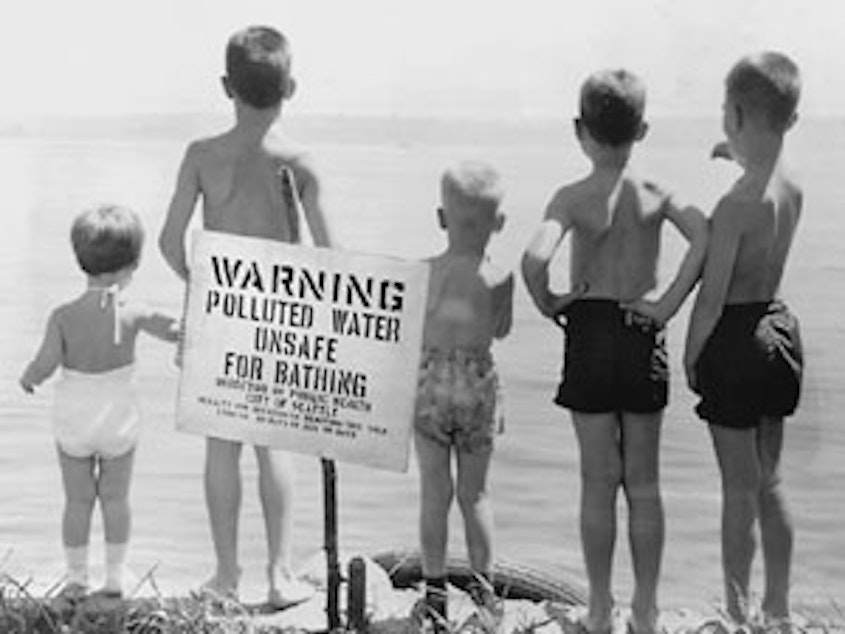How Lake Washington got cleaned up at the expense of area tribes

If you find yourself at Lake Washington this summer, breathe deeply.
Matthew Klingle, author of "Emerald City: An Environmental History of Seattle," says you wouldn't have wanted to do that 60 years ago, when the lake was chronically polluted with sewage.
He told Ann Dornfeld from KUOW's Race and Equity Team how Lake Washington got cleaned up — at the expense of a river sacred to local tribes.
Klingle: It was commonly called "Lake Stinko" at the time. From a distance, Lake Washington wouldn't appear that different if, say, you were flying over in an early Boeing aircraft. But if you were to step on the shores of Lake Washington in, say, 1956, 1957, particularly during the summer months when the algae growth was at its highest, you would see a something not unlike a stinking, fetid backyard pool choked with algae and smelling in the sun.
Related: How the plane that won WWII polluted the Duwamish River
Sponsored
Dornfeld: After a sewer system was created throughout the city of Seattle and the region, that sewage got dumped into places like the Duwamish River. What effect did that have on that river?
Klingle: Well the thing to keep in mind about the transference of the sewage to the Duwamish is that the immediate and proximate problem that Seattle and King County faced — with the ire of suburban residents living around the lake, the concern of scientists, the worries of public officials — was how you were going to revive a lake that was the centerpiece of the burgeoning suburban communities surrounding it. So, not surprisingly, the engineers, the planners of [the sewer system] found the easiest way to remove the sewage was to follow the old original watershed: Lake Washington used to drain into the Duwamish before the dredging of the Ship Canal.
So one of the challenges is that you're moving the sewage from the now connected home sewer systems — the residential waste — but you're also carrying with it the industrial waste. The Washington Pollution Control Commission throughout the 1950s and 1960s was very much concerned about the mounting pollution burden in the Duwamish River. But the engineering solutions at the time as such made the Duwamish, in some ways, the natural place to put that sewage.
Related: Photos of pollution in Duwamish River
Dornfeld: That's despite the fact that you had a lot of Native Americans and immigrants who relied on fishing in the Duwamish for their own dinner tables, if not for commercial reasons at that time.
Sponsored
Klingle: And from the very beginning of European-American resettlement and contact, these waterways, these shorelines all become, in a sense, contested battlegrounds over who gets to determine who controls the resources. Who gets to determine where people live and how to use the environment in particular ways. It also coincides at the very moment when Native peoples were beginning to fight for their rights as enumerated in the treaties of the 1850s to fish in the usual and accustomed places: To be entitled to one-half of the catch, as the original treaty said.
And so it was this convergence of addressing a very real environmental problem in the pollution of Lake Washington, building a regional sewer system, and thinking on a regional level about how to combat an environmental problem like pollution, coming into confluence, if you will, with rising Native concern over sovereignty and self-determination, wanting to exercise their treaty rights and wanting to fight for the right to capture those fish. It made for, among many other places throughout Puget Sound, dramatic conflict that eventually yielded the 1974 U.S. v. Washington, commonly known as the Boldt Decision, that effectively upheld the treaties and began to establish the federally-recognized Native peoples around Washington state as co-managers of the region's fisheries.
This transcript has been lightly edited for clarity.

